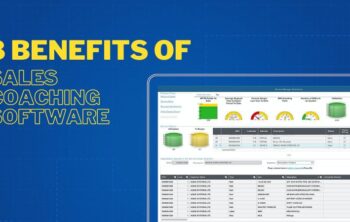A lead is a new potential customer. And lead generation is the process of acquiring more new customers. Fortunately, there are several effective strategies and tools using which your sales team can easily increase the number of leads.
No matter what business you run, leads play a crucial role. But what can make a big difference is the process of capturing leads. It is advisable to implement all possible strategies to capture and nurture leads.
Sometimes, it may vary from business to business the way leads have been captured and retained. Because it’s not only about attracting new leads but also about the methods to keep them. This guide will walk you through the best lead generation practices to grow your business.
Effective Lead Generation Strategies
There are several lead generation practices that you can use to maximize your business growth. Here’s what you need to do.
1. Content Marketing
Content marketing is the art of creating and sharing high-quality customer information to attract a targeted audience. Today, consumers are constantly seeking out information to make informed decisions.
Businesses can establish themselves as thought leaders by offering articles, videos, and infographics that tackle industry-related challenges and questions. This not only drives organic traffic but also boosts trust and credibility.
Engaging, evergreen content has the power to turn casual browsers into loyal customers by continuously addressing their evolving needs and concerns.
2. Search Engine Optimization (SEO)
SEO is an intricate process aiming to increase a website’s visibility on search engines. At its core, SEO involves selecting the right keywords that potential customers might use. However, it’s not just about keywords. Rather, page speed, user experience, and mobile optimization are crucial when clubbing together.
An optimized website is like a storefront on the busiest street, providing ease of access to the customer and offering valuable information. As search engines prioritize high-quality, relevant sites, effective SEO establishes your brand’s online authority, driving free and sustainable organic traffic.
3. Use of Software for Lead Generation
Using software tools can elevate the lead generation process by seamlessly integrating pop-ups into website aesthetics, maximizing visitor conversions.
These tools, particularly lead capture software, offer personalized interactions, allowing potential leads to select their preferred communication mode, be it direct calls or scheduled messages. Intelligent lead scoring optimizes the timing of pop-ups, capturing interest at pivotal moments.
Additionally, with smooth integration capabilities for leading CRM and marketing platforms, businesses can streamline lead management and nurture, ensuring a unified and efficient approach to potential customer engagement.
4. Pay-Per-Click (PPC) Advertising
It is a model where advertisers pay a fee each time their ad is clicked. What sets PPC apart is its instantaneity. Businesses can immediately appear at the top of search results or on chosen websites.
Tools like Google Ads or Facebook Ads empower businesses to target based on demographics, interests, and behaviors. This precision ensures that ads are seen by those most likely to convert.
While organic reach builds authority, PPC can accelerate quick, targeted reach, effectively bridging the gap between businesses and potential customers.
5. Social Media Marketing
Social media platforms have transformed from mere communication channels to robust marketplaces. Businesses can leverage platforms like LinkedIn for B2B leads or Instagram for direct consumer engagement.
Effective social media marketing is about sharing insightful content, sparking conversations, and running targeted ad campaigns. These strategies amplify brand awareness and foster a community around the brand, driving customer loyalty and advocacy.
6. Focus on Email Marketing
Email, a seemingly traditional tool, remains a powerhouse in the digital marketing toolkit. It allows businesses to engage with their audience in a personalized manner. From newsletters that offer industry insights to promotional campaigns that drive sales, email marketing nurtures leads in a segmented and customized approach.
It’s like having a direct line to your potential customers, offering value right in their inboxes, thus facilitating a journey from awareness to conversion.
7. Webinars and Virtual Events
At the time of digital connectivity, webinars and virtual events bridge the gap between businesses and audiences worldwide. You can offer deep dives into industry topics or product showcases to position yourself as an expert.
Attendees, in turn, gain value and insights, forging a trust-based relationship. These platforms are like digital conferences, offering a mix of education, networking, and brand-building.
8. Referral Programs
There’s immense power in word-of-mouth marketing. A satisfied customer’s recommendation can often carry more weight than any advertisement. Referral programs incentivize this process, turning customers into brand ambassadors. By offering rewards or discounts for referrals, businesses create a cycle of loyalty and advocacy, ensuring a steady influx of warm, trustworthy leads.
9. Conduct Retargeting Campaigns
Retargeting is the digital equivalent of a gentle nudge to remind customers of their initial interest. Leveraging browser cookies, you can create campaigns specifically targeting users who’ve interacted with a brand but haven’t converted. By showcasing tailored ads based on previous interactions, businesses stay top-of-mind, increasing the likelihood of conversions. It’s a strategy rooted in persistence and personalization.
10. Networking
In a digital-first world, human connections still matter. Networking, be it at industry conferences, seminars, or online forums, provides opportunities to foster relationships. Beyond just lead generation, networking paves the way for collaborations, partnerships, and mentorships, allowing businesses to grow in multifaceted ways.
11. Affiliate Marketing
Affiliate marketing is a symbiotic relationship between businesses and individuals or other companies. Affiliates promote a product or service, driving traffic or sales, and in return, earn a commission.
This strategy amplifies brand reach, tapping into the affiliate’s audience base. The pay-for-performance model ensures that businesses only spend when tangible results are achieved, making it cost-effective and scalable.
12. Optimized Landing Pages
Think of landing pages as digital storefronts designed to convert visitors into leads or customers. These pages should be meticulously crafted, focusing on clear calls-to-action, persuasive copy, and intuitive design.
An optimized landing page guides the visitor seamlessly, making the conversion process effortless. In essence, it’s the culmination of various marketing efforts, ensuring that the leads generated are effectively captured.
Summing Up
By understanding and implementing these strategies, businesses can navigate the complex realm of lead generation. In fact, this beautifully ensures consistent growth and sustainability. The techniques discussed above can help you gain amazing benefits when used effectively. You can reach potential customers across multiple touchpoints. Whatever method you follow, just make sure it is aimed and aligned with your objectives.






